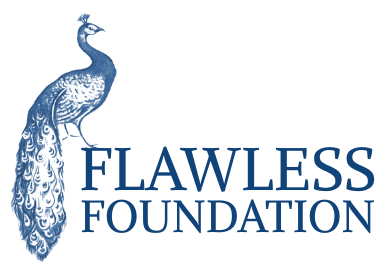Our culture loves superheroes. We flock to their movies, buy their merch, and fill our walls with posters of them. They’re powerful, misunderstood, and carry abilities that set them apart from everyone else. Yet the same culture that celebrates superpowers is terrified of those who live on the edges of what society deems “normal”—those labeled as mentally ill. The so-called “psychotics” are institutionalized, medicated, and isolated, their differences seen as threats rather than gifts. Why are we so afraid of the mentally ill but obsessed with the extraordinary? What is it about power, madness, and control that shapes this paradox?
Superheroes and psychotics both disrupt the status quo. Superheroes, in their best stories, exist at the edges of society. They see beyond the veil of what is, imagining what could be. Often, they’re outcasts, misunderstood, and ostracized—yet their powers enable them to challenge systems of oppression, to protect the vulnerable, and to dream up new worlds. Psychotics, too, live outside the norms of society, and their experiences often make them profoundly attuned to unseen realities. But where superheroes are revered, those experiencing psychosis are dismissed as irrational, dangerous, or broken. They don’t fit into the capitalist grind, and instead of being celebrated, they are subdued.
This divide speaks to how our society handles difference. We love the idea of extraordinary power—so long as it is harnessed and controlled. Superheroes represent a tidy narrative: their powers serve the greater good. Psychotics, on the other hand, challenge the illusion of control. They don’t fit into the neat boxes we’ve built to keep society running smoothly. Their visions and voices—their divergence from reality as most people experience it—remind us of the chaos we spend so much energy trying to ignore. They disrupt the comfort of “normalcy,” which is precisely why they scare us.
But what if we approached psychosis not with fear but with curiosity? What if we saw it as a kind of superpower—a heightened sensitivity to the fractures and injustices of the world? Throughout history, those who heard voices or had visions were often revered as shamans, prophets, or mystics. In many Indigenous cultures, people who experienced realities beyond the visible were guided through their transformations and integrated into the community as wisdom-keepers. It’s only in recent centuries, with the rise of Western medicine and the capitalist drive for productivity, that these experiences have been pathologized. We’ve turned what might be seen as a gift in other contexts into a problem to be solved.
The tension between superheroes and psychotics becomes even more poignant when we consider teenagers. Adolescence is a time of profound transformation—a period where identity is fluid and emotions are intense. In a healthier society, this might be a moment of initiation, where young people are guided through their chaos and welcomed into adulthood with an understanding of their power and potential. Instead, the turbulence of adolescence is often labeled as pathology. Teenagers experiencing their first psychotic break or profound emotional distress are often diagnosed and medicated rather than supported through their transformations. What might have been a rite of passage—a moment to explore their inner worlds and connect with something larger—is turned into a source of shame and alienation. In our fractured society, we fear the fire in these young people rather than helping them understand how to hold it.
When I was 18, I experienced my first psychotic episode, and it felt like both a curse and an awakening. I believed I was at the center of a cosmic battle, my mind flooded with symbols and visions that I couldn’t make sense of. It was terrifying, yes, but also expansive—a glimpse into a larger reality that I didn’t have the tools to navigate. Looking back, I can see that what I needed wasn’t sedation or control; I needed someone to help me make sense of what I was experiencing, to guide me through the mythic landscape of my mind. Instead, I was hospitalized and medicated, my experience dismissed as meaningless.
The parallels between superheroes and psychotics run deep because both speak to our longing for connection and our fear of the unknown. Superheroes offer us a way to engage with power without having to confront the chaos that often accompanies it. Psychotics, on the other hand, embody that chaos. They remind us that power and vision are not always neat or safe, that transformation can be messy and overwhelming.
But maybe it’s precisely that messiness that we need. In a world teetering on the brink of ecological collapse and social breakdown, the stories we tell about power and madness matter. Do we embrace those who see beyond the edges of our systems, or do we suppress them? Do we guide young people through their transformations, or do we pathologize their pain? The way we answer these questions shapes not just how we treat the so-called mentally ill but how we imagine our collective future.
Psychosis, like superpowers, can’t be neatly packaged or controlled. It’s a fire that can destroy but also illuminate, a force that demands respect and care. If we learn to approach it with humility and curiosity, we might find that those we fear the most—the ones society labels as broken or dangerous—are actually holding the keys to our survival. They are the ones who remind us of what’s possible when we step outside the confines of what we think we know. And maybe, just maybe, they are the superheroes we’ve been looking for all along.
By Sascha Altman DuBrul







